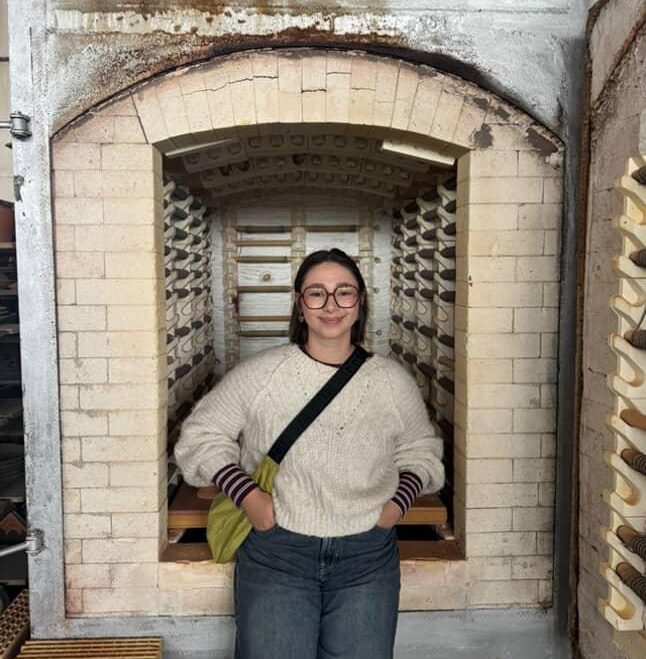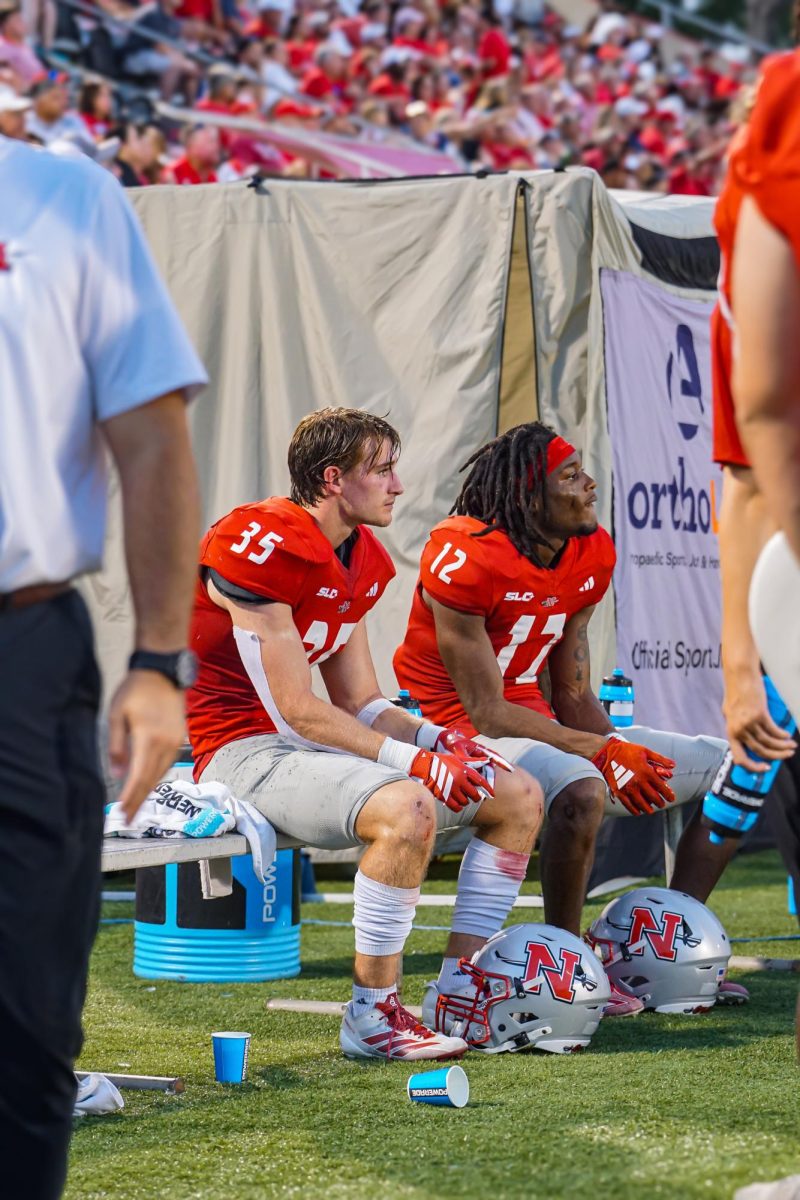Madison Rogers’ concentration suddenly broke when her phone lit up with a notification.
She was filling out paperwork to become an art teacher. Her interview had gone well, and she was ready to begin her life in a classroom.
She unlocked her phone and read an email that would change her life forever.
Fresh out of college, the late nights of studying and two semesters of residency had prepared her for this career.
But when she put down her pencil and read the email, she learned she had been accepted into the Fulbright Program.
Just three months earlier, Rogers thought her dream of becoming a Fulbright scholar was over. Fulbright told her she was not selected and might only receive an offer if another candidate dropped out. She moved on with her plans to teach art in Louisiana.
But now, unexpectedly, the opportunity she thought was impossible had become real.
Today, she is in Slovakia, teaching art for 10 months. The transition has not been easy, but the experience has been life-changing.
“It just feels so surreal that I’m here and that I’m living here,” Rogers said.
Learning about the Fulbright Program
Rogers learned about the Fulbright Program during her senior seminar with Ashley Busby, an assistant professor at Nicholls for Art History, in the fall of 2023. Until then, she hadn’t known the program even existed.
“I just knew this was something I always wanted to do,” Rogers said.
After class, she asked Busby about it, and together they began exploring her options.
The Fulbright Program is the U.S. government’s international educational program to strengthen understanding between Americans and people in other countries through academic, professional and cultural exchanges.
The first step in the application process was choosing what type of award to pursue. Rogers decided on an English Teaching Assistantship.
The next step was deciding where to apply. Many countries require applicants to speak the local language. Rogers decided she wanted to experience more of Europe after studying abroad through a previous scholarship.
She and Busby narrowed her choices down to Slovakia and Moldova. Both had smaller applicant pools and a stronger chance of selection.
Her family was skeptical. She had to explain to them where Slovakia was.
“Not a lot of people know about Slovakia, but it has such a rich history of folk culture and is known for ceramics,” she said.
Rogers applied in October 2023 and spent the summer preparing her materials.
She had to write several essays, including a personal statement, a statement of grant purpose, a host-country engagement plan and a summary of her goals upon returning to the United States.
To strengthen her application, she connected with past Fulbright participants in Slovakia through social media. She read their sample essays, asked questions and gathered advice on how to improve her own submission.
“It was the moment I realized she was really serious about this,” Busby said. “And it was something I really hoped she would get.”
Rogers also took an independent study to learn more about Slovakian art.
“I was all for it, just hearing about the opportunity and what it could do for my future,” she said.
The application process was long.
“Even applying felt like a shot in the dark,” Rogers said. “I didn’t think I’d get it, but I knew I wanted it so badly that I was going to try anyway.”
After completing her application, all she could do was wait. In January 2025, she learned she was a semifinalist and that she would go through another round of voting.
In May, she received an email telling her she was an alternate and the position would only become available if more funding became available or if someone dropped out.
“I kinda just dropped my hopes of Fulbright,” she said.
She accepted a teaching job in Mandeville and prepared to move forward with her career. Then, unexpectedly, another email arrived; she was accepted into Fulbright after all.
Suddenly, Rogers had to choose between her career in Louisiana or the possibility of more.
She called her family to share the news.
“Madison, you have to make your own decision,” her grandmother, Carolyn Charpentier, said. “Whatever you decide, we’re going to back you up 100 percent.”
“I just wanted to take the jump and go,” Rogers said.
Life in Slovakia
Now, Rogers works as an English Teaching Assistant at a secondary school in Slovakia. She teaches art to students between the ages of 13 and 18. She works 16 to 18 hours a week.
In Slovakia, students attend different classes every day of the week. She teaches the same lecture to different groups each day.
“Their school system is very different compared to the U.S.,” she said.
Rogers doesn’t have to speak Slovak when teaching. Most of her students have been learning English since elementary school.
“Teaching kids in Slovakia is just like teaching kids in the U.S. I think all teenagers act the same in some type of way,” she said.
Her favorite part of her first week was hearing students’ assumptions about Americans.
“I asked them, ‘Would you rather speak English or live in the U.S. for the rest of your life?’ and one student said, ‘I don’t want to live in the U.S. because your healthcare is expensive,’ which threw me for a loop,” Rogers said.
She has also started an Art English Club, where students learn about art pieces and practice their English through creative activities.
After finishing school around noon each day, Rogers spends time reading, figuring out meals and sketching scenes of the town. On weekends, she explores Slovakian art and culture.
She recently visited the Slovak National Gallery in Bratislava and received a year-long membership. Her mentor also brought her on tours of Driny Cave and Smolenice Castle.
“I’m so thankful for such an amazing first week of teaching and adventures,” Rogers said.
Still, the transition has been challenging. Rogers said Slovak has been difficult to learn. Luckily, most people in Slovakia speak English.
“They have more syllables in their words and pronounce words with z differently,” she said.
Another struggle she faces is how much she misses her family.
To stay connected, Rogers wakes up at 5 a.m. to call home, when it’s 10 p.m. in Louisiana. There is an 8-hour difference. Regardless, her family still encourages her to call them if she ever feels lonely.
They tell her that she deserves this and that from across the world, they’re in her corner. Her mother checks on her every day, and her boyfriend calls before she goes to work.
When she feels lonely, her grandmother says to her, “Make sure you say your prayers every night because that’s the only one you can really rely on.”
Looking ahead, Madison hopes to apply for teaching positions when she returns and eventually pursue her master’s degree. She’s also interested in teaching at the college level or in museums, but for now, her focus is on coming back to teach children in Louisiana.
She is still slowly building a routine and figuring out how to cope with being far from home, but overall, she has embraced the opportunity.
“I’m so thankful for such an amazing first week of teaching and adventures,” she said. “It’s so crazy to think this is where I am now, being from Cut Off.”








